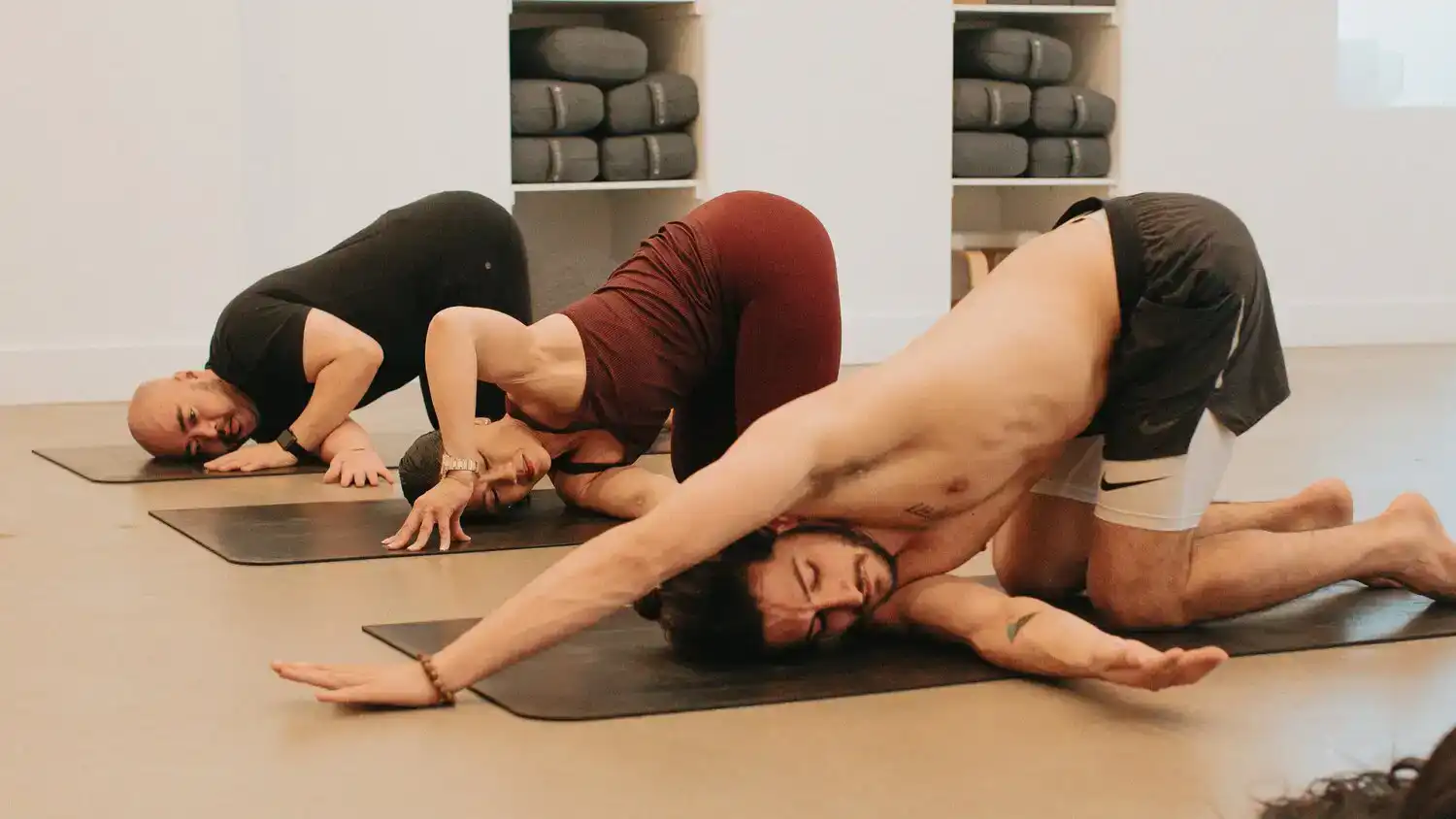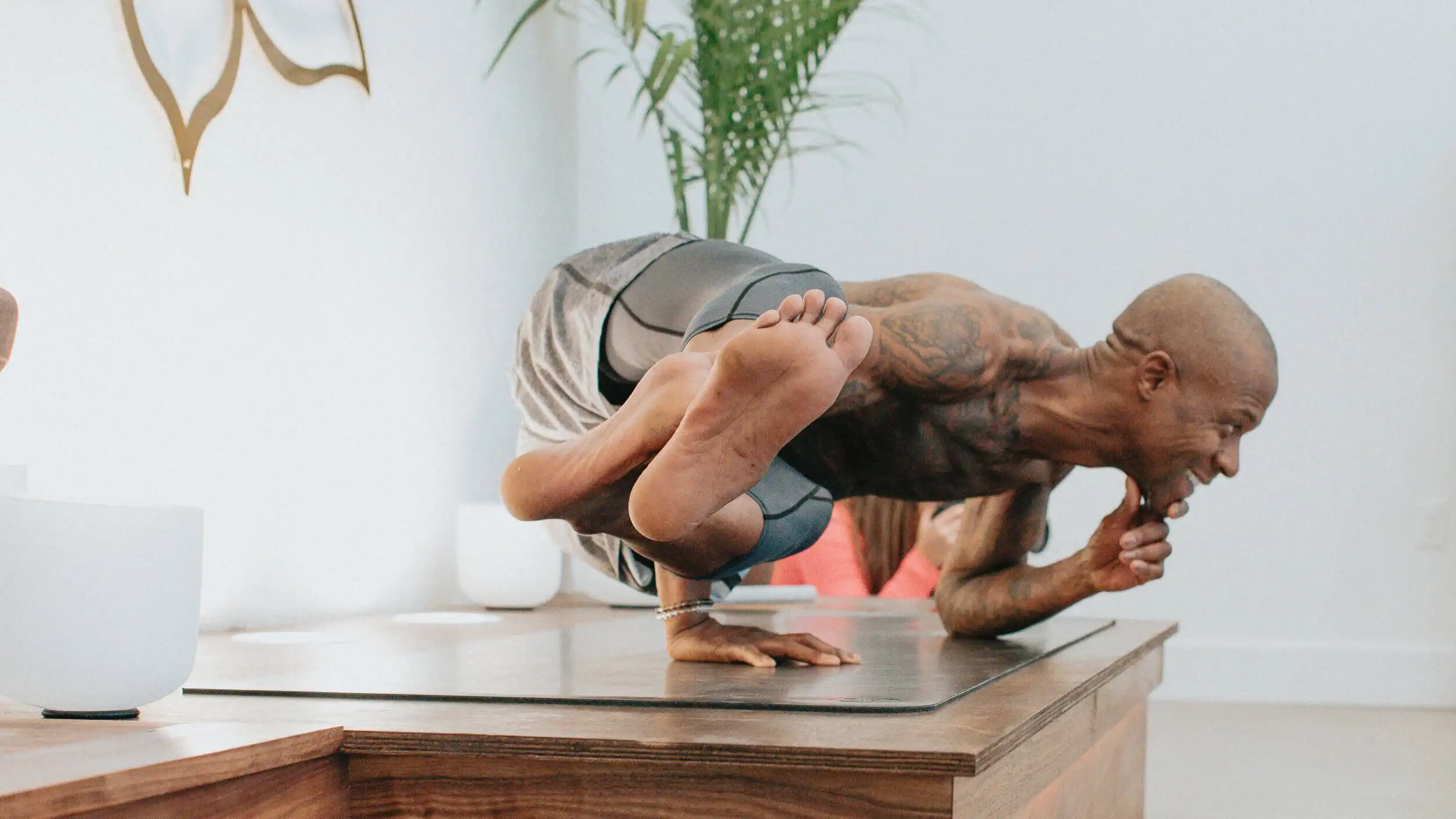
Yoga Retreat in Woodside, CA | Woodside Wonder
Vinyasa Yoga
Vinyasa Yoga is a form of yoga characterized by synchronizing breathing with continuous and variable postures. Also called “flow yoga,” Vinyasa Yoga aims to recognize the fluid and transitory nature of the world. Vinyasa Yoga classes help reduce stress, alleviate some symptoms of depression, and improve stability.

Physical Benefits
With physical benefits, the most salient would be increased stability and balance. Because of the nature of the poses involved in Vinyasa Yoga, you will find that you’ll have more control over your body and have a much better sense of balance.
Vinyasa Yoga’s poses and the emphasis on quick transitions between them and your breath also impart enhanced endurance. It also improves your muscle strength from the physical activity involved.
Advanced forms of Vinyasa Yoga also involve faster transitions between different poses. Not only is this more physically challenging, but it also carries the same benefits as a light-intensity cardio routine. In the long run, it could improve your cardiovascular health.
Mental Benefits
Vinyasa Yoga’s transitive poses and focus on breath as a transition emphasizes the temporary nature of all things. It teaches you that all things are transitory, including negative emotions and circumstances.
Practicing Vinyasa Yoga can help reduce your anxiety levels and decrease your stress. The soothing focus on breathing and centeredness will assist in calming your mind. Not only are classes calming, they can also be fun, providing you with camaraderie with your classmates.

Ashtanga Yoga
The sequential asanas combine with the basic vinyasa to create rhythmic movements that link one's postures. Breath and body move together to liberate dormant energy and produce an internal heat, designed to purify the body. This dynamic practice that synchronizes breath and movement begins with Suryanamaskara (Sun Salutation). Followed by a standing postures consisting of three fundamental techniques... pranayama (Breath), bandhas (energy locks) & drishti (gazing point). The practice moves you to sequential seated postures. Working on each side of the body to give balance between strength and flexibility.
Physical Benefits
Ashtanga Yoga is more physically demanding than other forms of yoga, involving postures and poses that evoke contortionists. Because of this focus on increasing the range of movement in your joints and muscles, one of the primary physical benefits of practicing Ashtanga Yoga is improving your flexibility.
Aside from making your body more flexible, this form of yoga is also sovereign in improving muscle strength. The poses involved help work out your musculature by pushing their limits, especially with muscles in the arm and core. Each pose is designed to test your body and, in doing so, make you stronger as a whole.
Finally, like all yoga forms, Ashtanga Yoga is an effective cardiovascular workout. The emphasis on breathing, combined with the physical strain of each pose gives your heart and lungs the exercise they need to keep you healthy.
Mental Benefits
Ashtanga Yoga focuses on being present and aware of your surroundings. The contortion-like poses involved encourages you to take into account your environment and be present.
These poses also emphasize balance and coordination. The precise movement and pose of each limb and synchronized with your breathing contribute to improving how well you move your body.
Pushing through your physical boundaries and performing the poses in Ashtanga Yoga also enhance your mental fortitude. To perfect Ashtanga Yoga, you must able to develop the mental strength to overcome challenges emotionally and physically. This prepares you to take on similar problems in your day-to-day life.




















